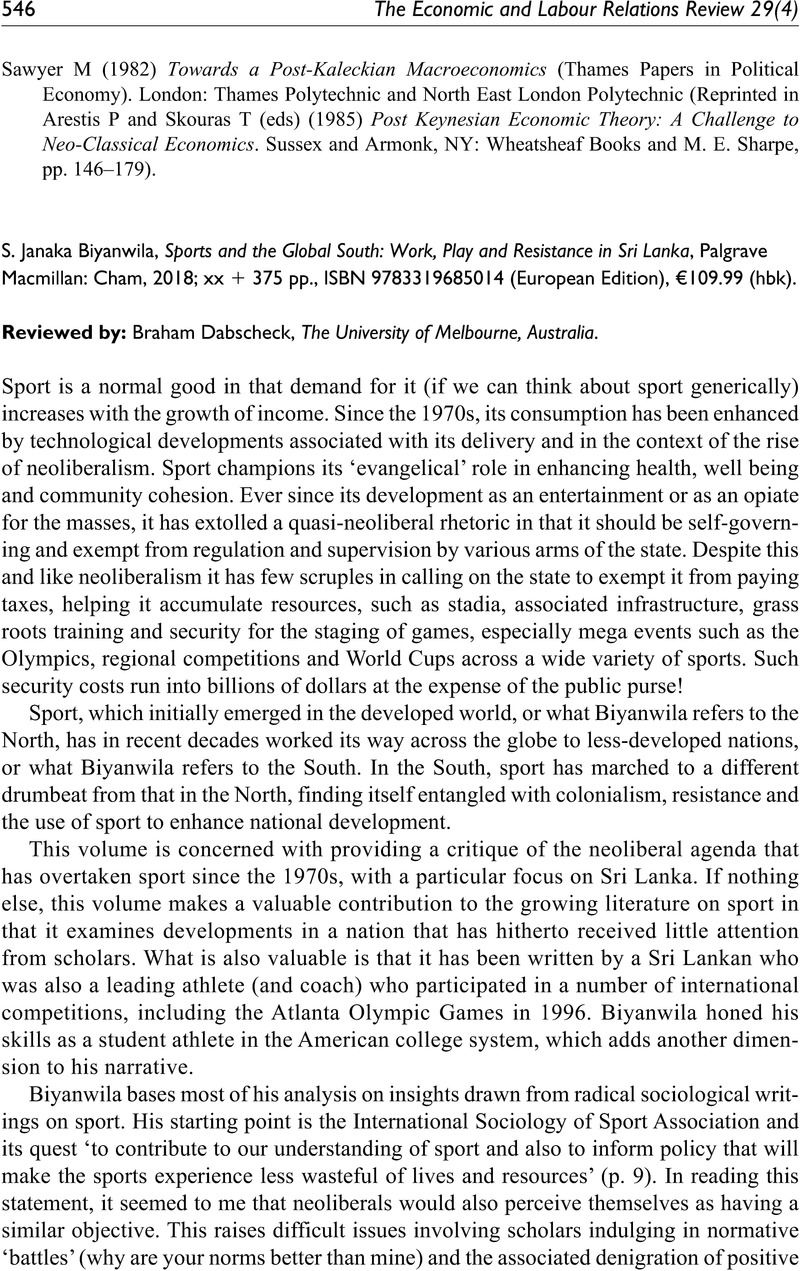No CrossRef data available.
Article contents
S. Janaka Biyanwila, Sports and the Global South: Work, Play and Resistance in Sri Lanka, Palgrave Macmillan: Cham, 2018; xx + 375 pp., ISBN 9783319685014 (European Edition), €109.99 (hbk).
Review products
S. Janaka Biyanwila , Sports and the Global South: Work, Play and Resistance in Sri Lanka, Palgrave Macmillan: Cham, 2018; xx + 375 pp., ISBN 9783319685014 (European Edition), €109.99 (hbk).
Published online by Cambridge University Press: 01 January 2023
Abstract
An abstract is not available for this content so a preview has been provided. Please use the Get access link above for information on how to access this content.

- Type
- Book reviews
- Information
- The Economic and Labour Relations Review , Volume 29 , Issue 4: Symposia: Global Financial Crisis 10 Years On; Full Employment White Paper , December 2018 , pp. 546 - 548
- Copyright
- © The Author(s) 2018
References
Dabscheck, B (1979) ‘Defensive Manchester’: a history of the Professional Footballers’ Association. In: Cashman, R, McKernan, M (eds) Sport in History: The Making of Modern Sporting History. St Lucia, QLD, Australia: University of Queensland Press, pp. 227–257.Google Scholar
Dabscheck, B (1986) Beating the off-side trap: the case of the Professional Footballer’s Association. Industrial Relations Journal 17(4): 350–361.CrossRefGoogle Scholar
Dabscheck, B (2017) Forming teams of their own: the dramatic emergence of player associations across the globe. LawInSport, 26 January. Available at: www.lawinsport.com/articles/item/formimg-teams-of-their-own-the-dramatic-emergence-of-player-associations-acoss-the-globe#references (accessed 1 October 2018).Google Scholar
Harding, J (1991) For the Good of the Game: The Official History of the Professional Footballers’ Association. London: Robson Books.Google Scholar
Schwab, B (2017) ‘When we know better, we do better’. Embedding the human rights of players as a prerequisite to the legitimacy of Lex Sportiva and sport’s justice system. Maryland Journal of International Law 32(1): 3–67.Google Scholar


